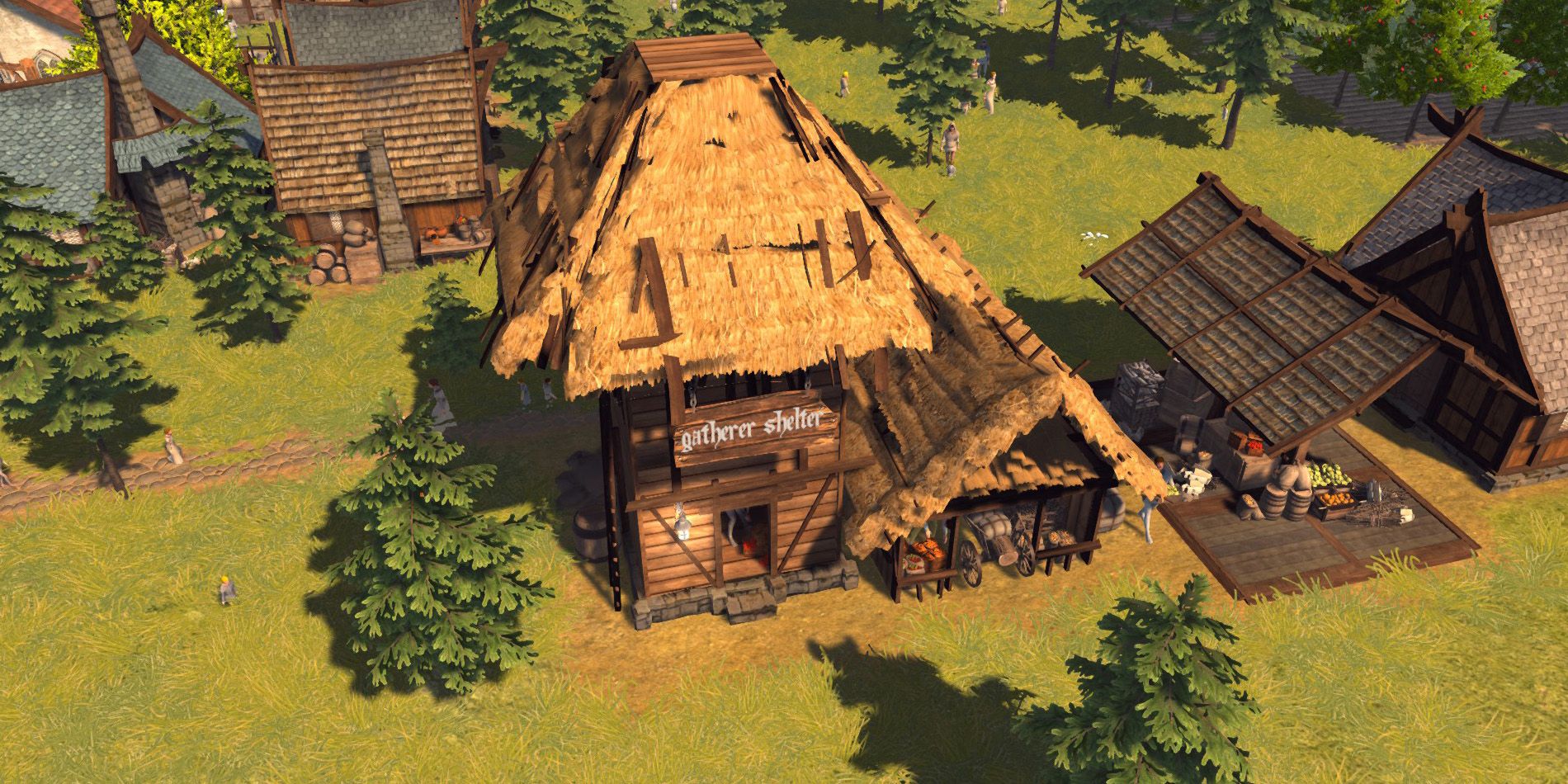
The early phases of Patron can be rather daunting, and it can be difficult to keep a colony fed, healthy, and happy. Similar to other colony builders like Going Medieval and Oxygen Not Included, in Patron, players are thrown into a new land with a ragtag group of settlers and minimal support from the larger kingdom. They will need every advantage to survive. With research, policies, and planning, players will gain new methods for easily producing and distributing food.
Players have a variety of maps to start on, all of them having static layouts which result in no random surprises. It is advised that early players choose one of the “Normal” difficulty maps with lots of fertile soil. The Volcano map has the best weather, though, with many islands, it can be harder to have adequate space. Both Mediterranean and Pineridge maps have lots of land, but things can get dicey in the harsh, cold winters.
Patron is a game designed around colonies growing over centuries or collapsing within the first few years. Players should not be discouraged from individual colonists dying or long months of famine; both will be footnotes in the grand scheme of their settlement's history. However, it may also be a good idea to have multiple backup saves, as seeds planted years ago might not cause major problems until later in the game.
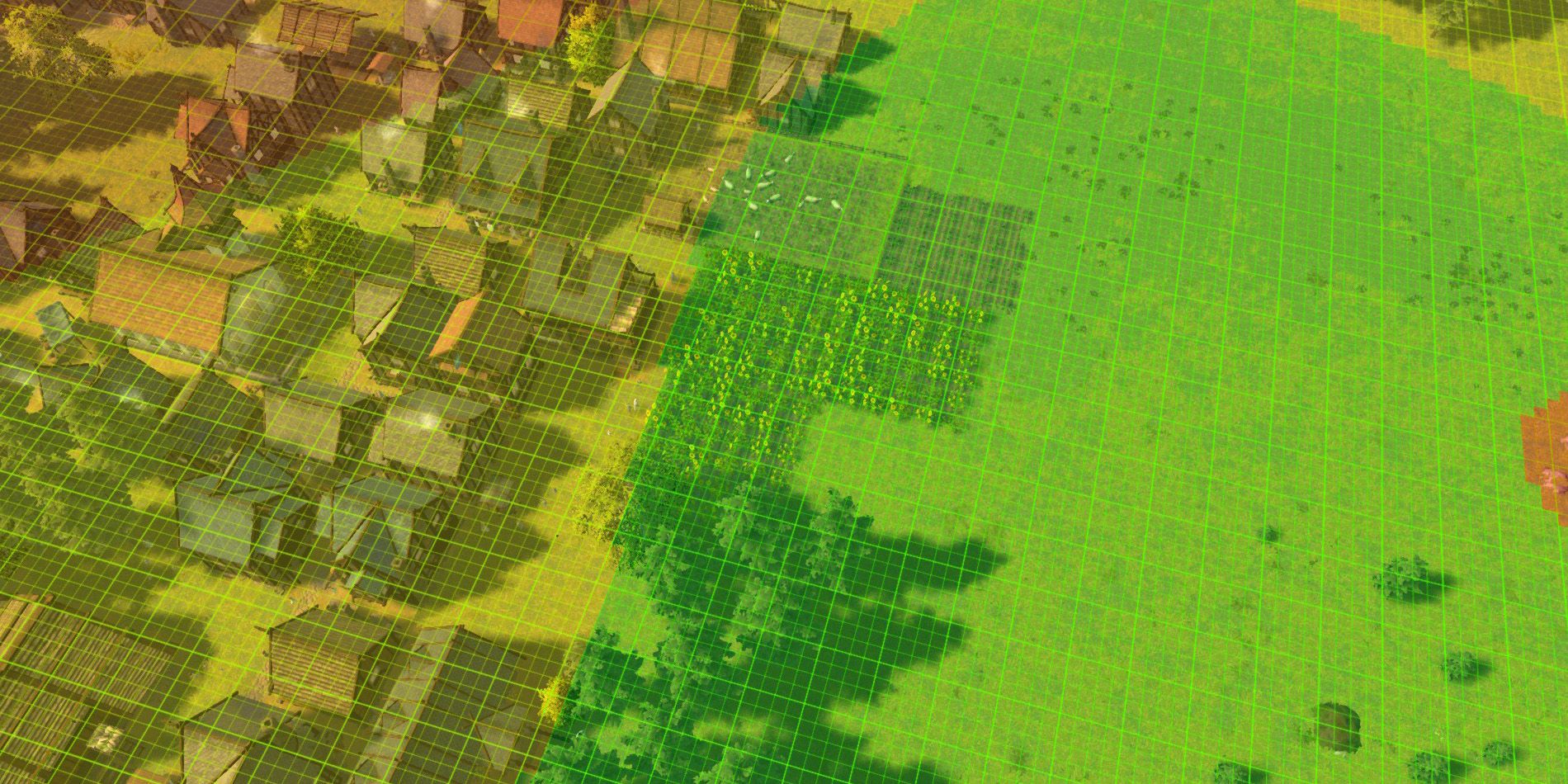
Before planning which foods to make in Patron, it is actually more important to decide how food will even reach citizens. Players will want to scout the map’s terrain in grid mode and then begin to build housing close to forest outskirts, coastlines, or fertile soil. Each individual family will want its own Tent or House but will share a larger Shelter. Once all housing is complete, players should also consider building Dirt Roads, Road Signs, and Depots to further hasten commutes.
Job Posting
While it may be tempting to make everyone a farmer or fisherman to help with food creation, it will actually delay the populace from being fed. Instead, players should adjust the Job Board so there are always the maximum allowed carriers along with at least 20% of colonists as generic workers. This is because average citizens will not claim goods stored in the Depot, and will simply wait for deliveries from carriers and workers.
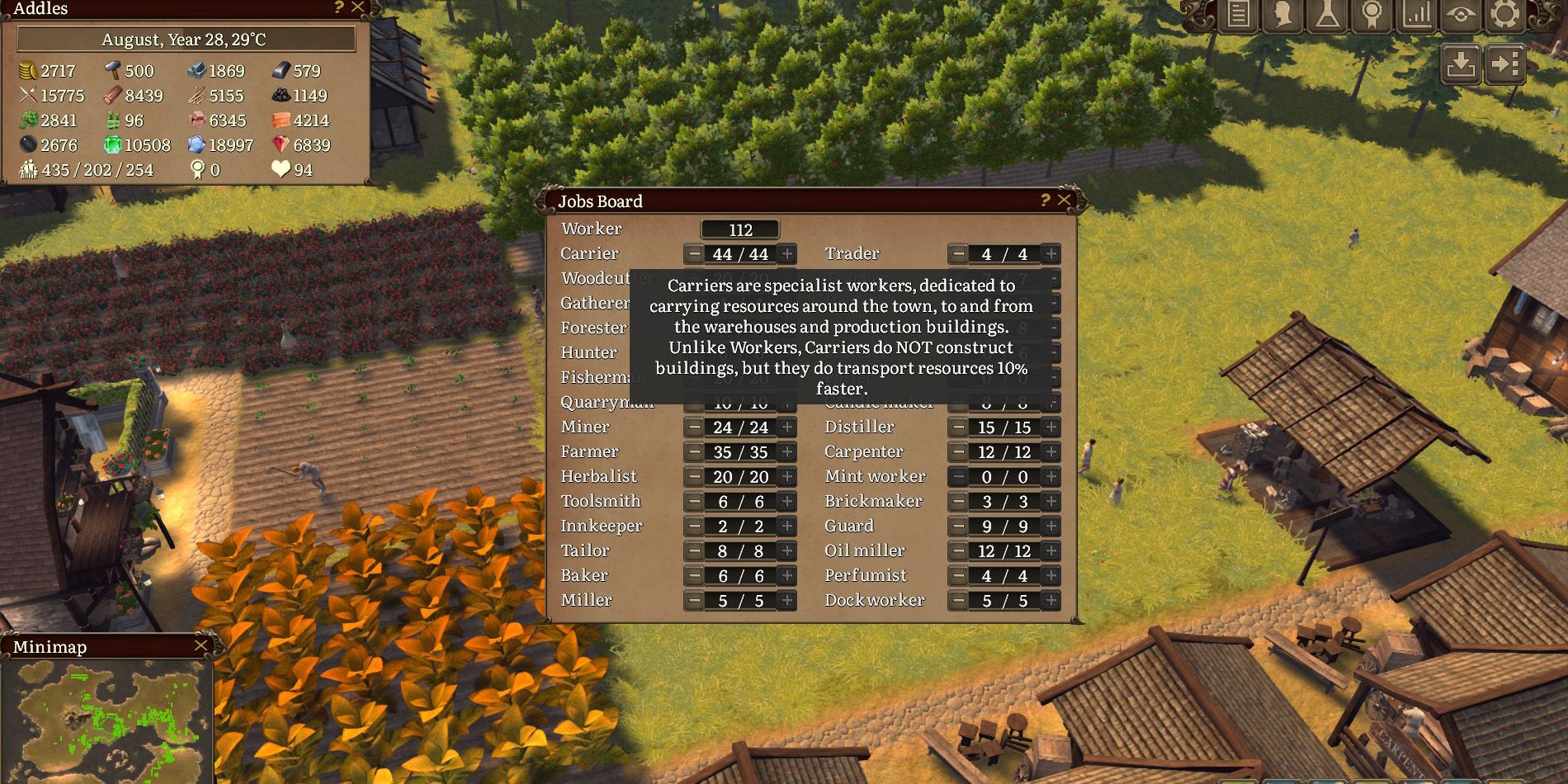
New Settlers
As a colony becomes more renowned, new settlers will arrive in the form of adult immigrants, their children, or newborn babies. However, players may be wary of granting entry, as they are yet another mouth to feed. Players should carefully evaluate if immigrant applicants will contribute enough income and production to offset the consumption of food.
Babies will eat constantly for 12 years before they reach adulthood and can join the workforce. To curb fast birth rates, families living in Shelters will not have additional children. In both cases, players can pass decrees at the Townhall to increase or decrease the likelihood of future settlers arriving.
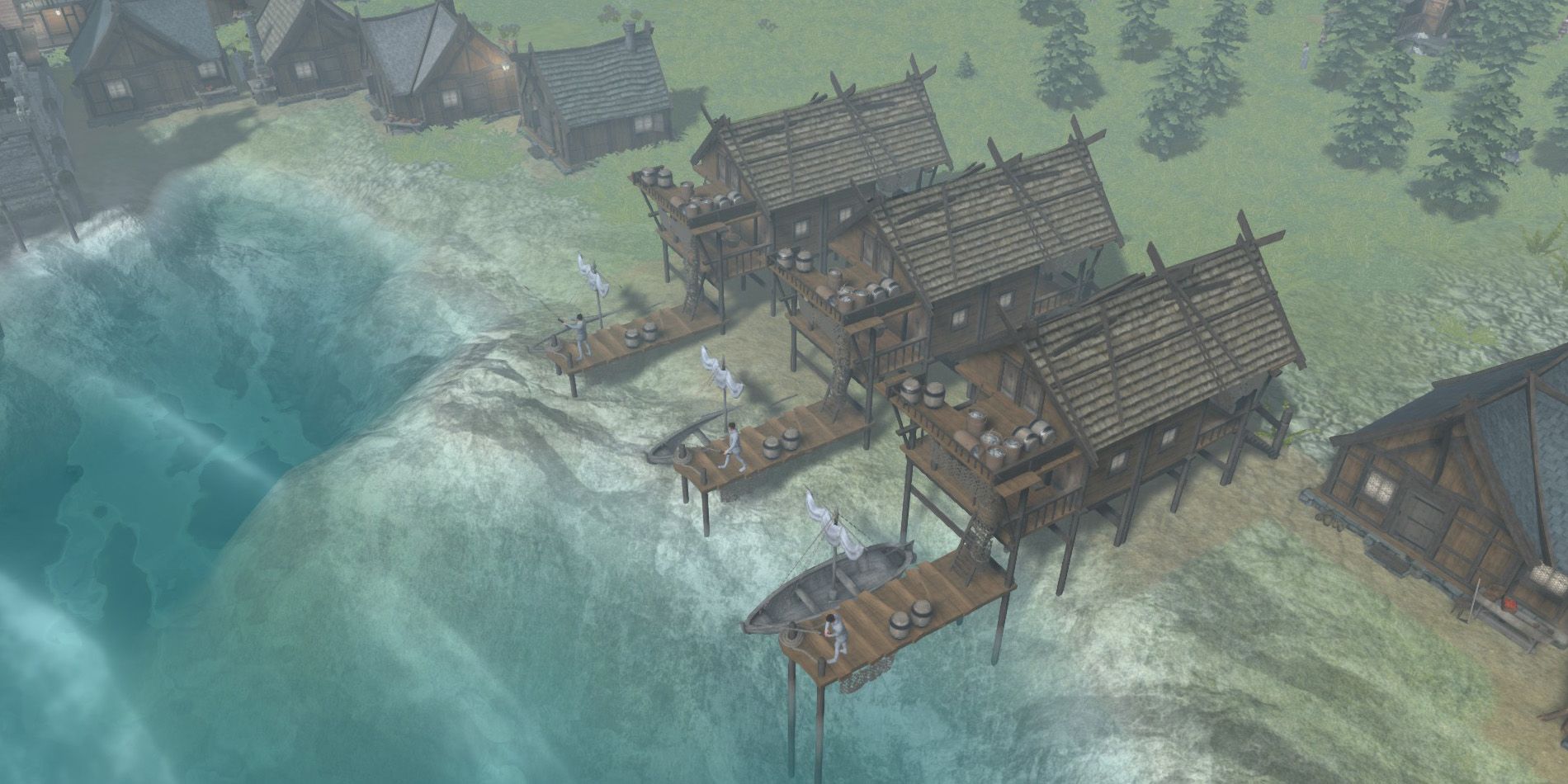
Once food locations are fully built, it becomes time to actually gather, hunt, or grow the goods. In most cases, a single building type should be created and expanded to meet worker demand, and then later, a second building should be constructed. For example, it is much more efficient to have four fishermen work together in a well-maintained hut than for each to be alone in separate, poor-quality workspaces.
Colonists need a mix of fruits, vegetables, and meat to stay healthy in Patron. Even if their hunger is being satisfied, people can still wind up becoming sick from eating just one or two food sources.
Ideal Foods
Some food types are incredibly potent for such little work and other resources are needed for them. Others are mediocre for actual food, but simultaneously create a second product needed by the colony. Players should consider building the following structures:
- Gather’s Shelter: collects mushrooms, roots, and strawberries with zero production upkeep
- Hunting Lodge: creates both venison and leather for clothing, along with bonuses when close to dense forests
- Fisherman’s Hut: catches plentiful fish for no cost, or crabs with a fair lumber cost. However, production slows during winter
- Apiary: makes honey and, more importantly, wax for candles
- Crops: carrots, cabbage, pumpkins, and potatoes are excellent food year-round. Sunflowers are also an option if the colony isn’t using them to make oil and perfume
- Orchard: peaches and pears are decent food without other production use
- Ranch: chickens are excellent for both meat and eggs. Sheep should be raised mainly for wool, with their mutton being a bonus
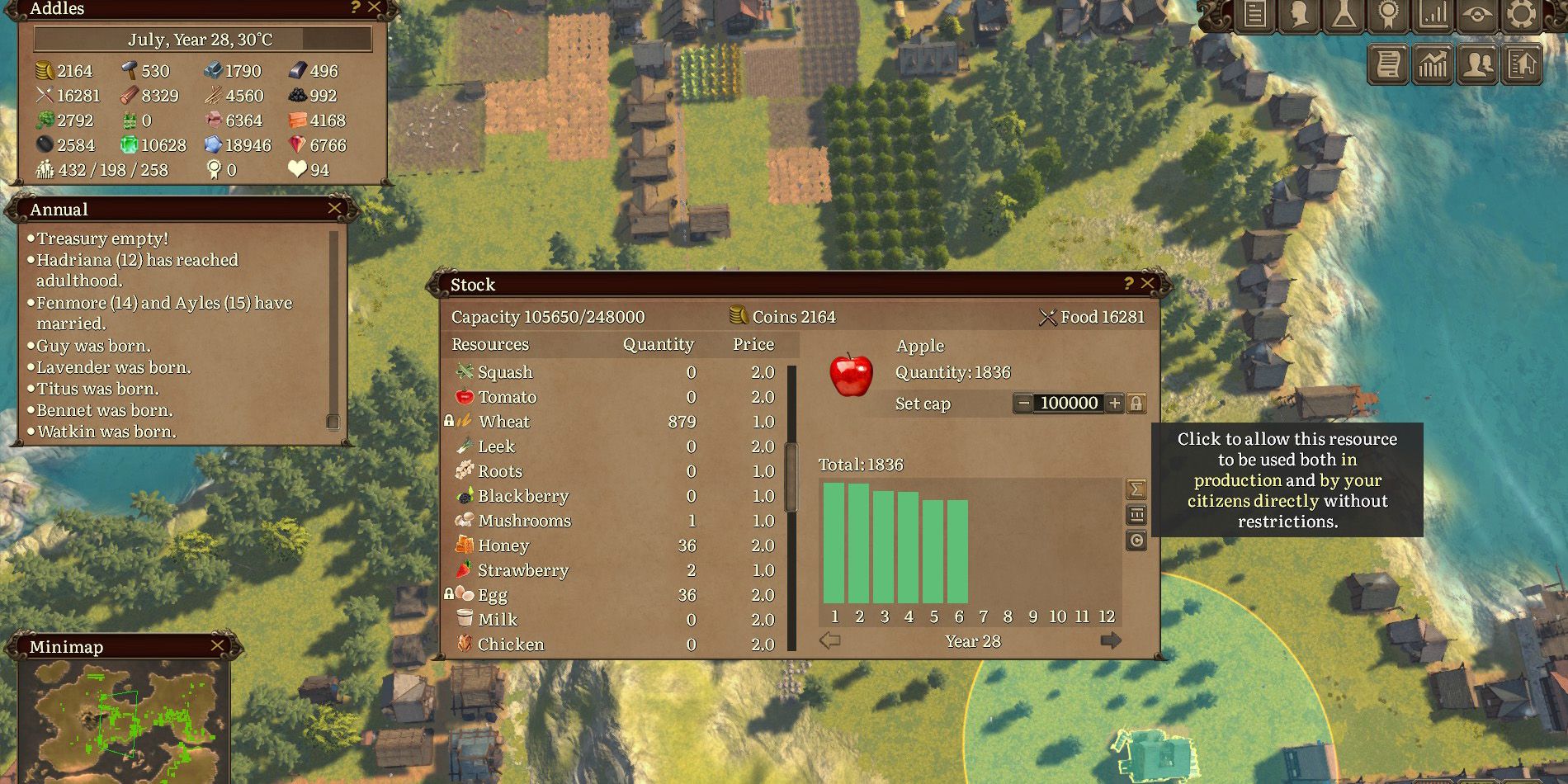
Food Traps
Some types of food production end up being money- and time-sinks that in the long run will end up hurting the colony. The food production methods players could disregard include:
- Fishery: catches fewer fish than a Fisherman’s Hut but takes no weather penalty. It has too poor fishing results during spring-autumn to justify the resistance to winter
- Mushroom Farm: overall an inefficient means of food and manpower compared to the Gather’s Shelter
- Bakery: bread is far too costly and time-consuming for its resulting nutrition. Cookies, however, are valuable as an export, so colonists should not eat them
- Crops: colonists should not be allowed to eat wheat, which is better used for cookies and other items
- Orchard: apples, plums, and grapes should be used for making luxury alcohol. Cherries are required to make cookies
- Ranch: pigs do not create a secondary good like all other animals. Cows cost too much land, money, and oats to justify their beef, milk, and leather supply
Players can enter any Depot or Warehouse and lock a food, leaving it still available for use in other products or to be sold for coin but preventing settlers from eating it.
If players have spare coin, they can also simply import goods at a Harbor. Players can trade up to 700 items per Harbor manually, along with another 540 automatically through Trade Deals. This system works both ways; players can also export any surplus food or maintain a balance of buying and selling. However, exports normally carry an extra tax to the greater kingdom unless players pass certain decrees.
Patron is available on PC.
from ScreenRant - Feed https://ift.tt/3DwvQeX
via IFTTT
No comments:
Post a Comment